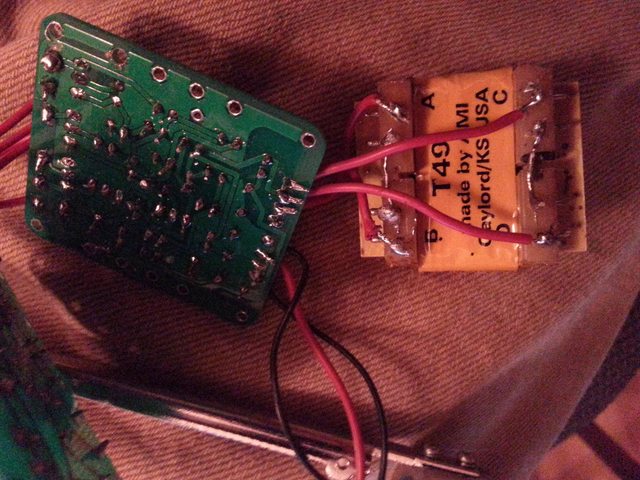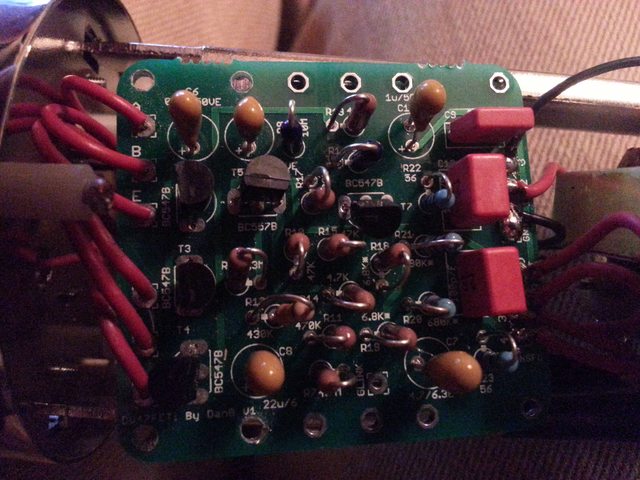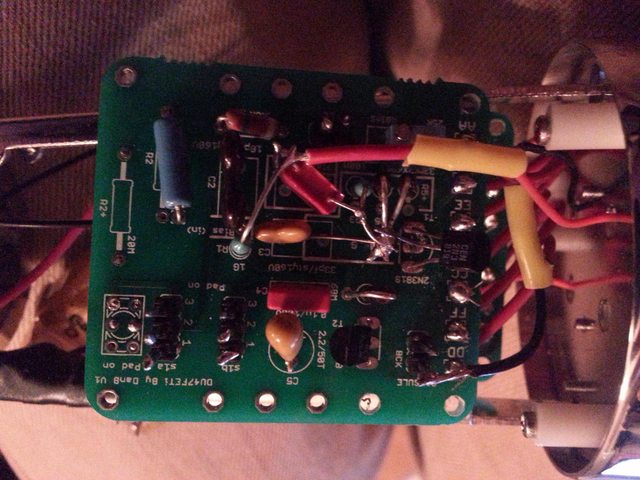Scrappersa said:
skidmorebay said:
I also took out the trim pot and bridged the connection. Replaced R6 with a 6.8k resistor. I'm not getting any signal except occasionally this weird popping thing happens where it makes a really loud clipping pounding sound over and over again until I turn off the mic. It's almost as if it's building up energy and then finally starts popping. Maybe a grounding issue? I checked all of my transistors and they seem to be in the right place. The polarity of all of the caps are good too. Hopefully my pictures are clear enough but let me know if you guys need to see anything else. I've been working on this all day and can't seem to get to the bottom of this.
I wonder if the problem is with your capsule. I'm not sure how this works, but I've read on this thread that some people checked their circuit with a small capacitor in place of the capsule. I think that would allow you to trace the circuit with an oscilloscope and tone generator, if I understand it right.
Anyone care to explain how that would work?
Does it look like my transformer is hooked up correctly?
Make sure your link A to F are Solid continuity , that might be your problem here , remove the capsule and check all the schematic reference voltage that is usually the way to start troubleshooting , relating the reading you sent me A B primary 648 ohm and secondary C D 15 ohm is correct so the infomation above is correct . double check also the polarity of tantalum cap they are polarized also. Check you that you have a proper ground from F to the mic body and then pin 1 also .
from the picture also it could be a cold solder joint , just a tip for the future, on soldering, try to use less solder and focus on what the solder does when the proper temperature is reached just put a touch on it and if you see the solder penetrating in the pad and form a nice little cone then this will help your future build garantueed you'll see when experience come in

also from the picture make sure you dont have pad or connection from the pcb touching the rail this will do it bad.
hang i there ,
Best,
dan,
Hope this helps,
Dan,





























![Soldering Iron Kit, 120W LED Digital Advanced Solder Iron Soldering Gun kit, 110V Welding Tools, Smart Temperature Control [356℉-932℉], Extra 5pcs Tips, Auto Sleep, Temp Calibration, Orange](https://m.media-amazon.com/images/I/51sFKu9SdeL._SL500_.jpg)











